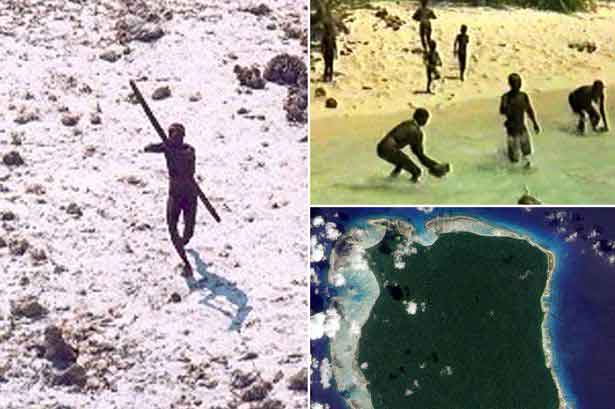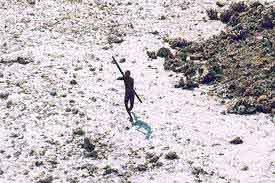Stone Age Still Survives –Nicobar Islands
The Andaman and Nicobar Islands consist of aboriginal indigenous people, i.e. tribal people. They have been dwelling in the forests and jungles of the islands for centuries, lead a hunter-gatherer lifestyle, and appear to have lived in substantial isolation for thousands of years. The so called civilians or city dwellers only came later, earliest a few hundred years ago.
The Andamanese and the Nicobarese can be split into two broad tribal groups mainly based on their place of origin. The Andamanese Islands are home to four ‘Negrito” tribes – the Great Andamanese, Onge, Jarawa, and Sentinelese. Whereas the Nicobar Islands are home to two ‘Mongoloid’ tribes –the Shompen and Nicobarese.

The Nicobarese people are Austroasiatic-speaking people of the Nicobar Islands. The largest and main island is Great Nicobar. The term Nicobarese refers to the dominant tribes of the Nicobar Islands. On each island, the people have specific names, but together they are the Nicobarese. Nicobarese are the foremost developed tribes of Andaman and Nicobar Islands as compared to the other tribes. Nicobarese are facing transition phase in which, neither are they primitive nor modern.The Nicobarese are a designated Schedule Tribe in India.The Nicobarese may not have been the first people to live in the islands, they appear to have shared the islands with Shompen who came to the islands earlier.
Also Read:
- Best Monsoon destinations to Explore in India
- Hats off to the saviours Shah Satnam Ji Green ‘S’ Welfare Force Wing
- Maldives – The Sunny Side of Life
- Diu-A Splendid Island
- Interesting Myths Around The World
“Shompen” is possibly an English mispronunciation of “Shamhap”, the Nicobarese name for the tribe. The Shompens living on the western side of the island call themselves Kalay, and those on the eastern side Keyet, with both groups referring to each other as Buaveia. The Shompen are semi-nomadic tribe living in the small scattered settlements of Great Nicobar Islands, still in the primitive living conditions and escapes by seeing an outsider. They live in habitations made of the bamboo and leaf thatch. The traditional attire for men, is short, thin loincloth made of bark cloth. Decoration is limited for men, consisting of bead necklaces and armbands. Women wear a knee-length skirt of bark cloth, occasionally with a shawl of bark cloth covering the shoulders. Decorations include bamboo ear plugs, bead necklaces and armbands of bamboo. Shompens are barefoot.

The Shompen languages, of which there are at least two, are very little known. The linguist, Paul Sidwell classifies Shompen as a Southern Nicobaric language, rather than a separate branch of Austroasiatic. The Shompens have two divisions, the smaller divisions being known as Mawa Shompens and inhabit areas very close to the coastal region along the river valleys. They are very shy.
They are quiet intimate with the Nicobarese. The major group of Shompens living in Alexendria and Galathia river areas and also on the east coast of the area in the interior of the island. In the past, frequent attacks are believed to have made on the Mawa Shompens by the hostile Shompens. But now such hostility has stopped. It is probably because they have been largely reduced in number due to various diseases. The Shompens are the victims of disease and physically very weak.
In the 2014 general elections, for the first time in the island’s history, only two (a 75 year old male and 32 year old female) out of its 107 voters came forward to vote. With the help of Nicobari youth who know the Shompen languages, the authorities communicated the voting rights.
The Shompens are a distinct population living on the earth who remained virtually isolated and untouched by modern civilization. Only 50 years down the line, their lands have been occupied, their forests chopped down, their animals hunted and they themselves outnumbered by people from an alien culture. Even more damaging, the East-West road (measuring 43km) was constructed through pristine Shompen territory.
The Shompen inhabiting zones in Great Nicobar Island should be conserved and protected from the intrusions of people. The Shompens are extremely disciplined people. If we co-operate the Shompens, have every chance of surviving as hunter-gatherers. There is an urgent need to look into the health status of the Shompens. As the Shompens are biologically, genetically, culturally a distinct population living on the earth, it is the duty of all of us to save this aboriginal population before they get extinct from the planet.














































